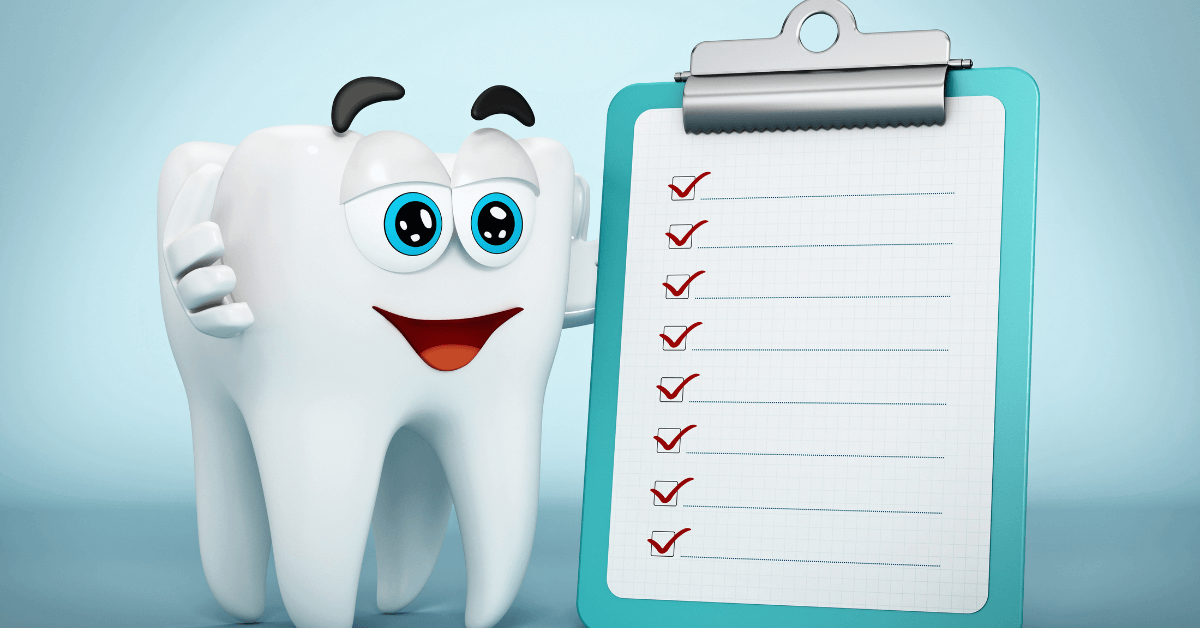
A sound dental practise must include both brushing and flossing. To help maintain teeth and gum health, which will improve your general welfare, there are other things you can do.
1. USE A BRUSH TO CLEAN YOUR TEETH TWICE A DAY FOR TWO MINUTES EACH.
Regular maintenance is the first step to maintaining clean, healthy teeth. Plaque can be avoided by brushing for two minutes at a time twice day, or the “2×2 rule.” Children’s patients should explain this idea to them at a young age and discover ways to make it enjoyable. While they brush, you can play music or set a timer to alert you when two full minutes have elapsed. Try to give each quadrant of your mouth 30 seconds of attention to make it easier to clean every tooth (upper right side, upper left side, lower right side, lower left side). To ensure that the teeth are cleaned properly and that the soft tissue surrounding them is not harmed, use the necessary techniques. Set the brush head at an angle so that it faces the gums while making little circular motions. Make sure to thoroughly clean both the front and back surfaces of your teeth, as well as the gum line. For some people, utilising an electric toothbrush also has its benefits.
2. SELECT BEST SUPPLEMENT FOR GUM
For oral hygiene, many people use mouthwash and toothpaste, however these products include toxic compounds that harm the mouth’s flora. ProDentim is the only oral probiotic in the world to contain 3.5 billion probiotics and nutrients, as well as the three distinct components Lactobacillus Paracasei, Lactobacillus Reuteri, and B. lactis BL-04, which have been shown in studies to support the health of your teeth and gums. Read ProDentim Reviews to exlore everything about ProDentim Probiotic.
3. FLOSS EVERYDAY
Every night before brushing, flossing is advised to get rid of any debris that your toothbrush can’t move. Despite the fact that many patients admit to neglecting it, this step is crucial to a healthy habit. Small food fragments and other deposits overlooked by your toothbrush when you merely brush and decide you don’t need to floss can eventually result in decay. Make sure you spend two minutes each day flossing in order to prevent this. When you first begin flossing, it could sting your delicate gums. This is normal and will go away after a few days of flossing. When flossing, be sure to move the floss up and down the length of the tooth. Do not overlook the need to floss in small crevices because your toothbrush cannot reach these areas.
4. IF YOUR TOOTHBRUSH SHOWES SIGN OF WEAR, REPLACE IT
Generally speaking, replacing it every three to six months should keep it in good enough condition to effectively clean your teeth. Damaged or frayed toothbrushes can harm your gums and improperly clean the surface of your teeth. You may contribute to keeping your toothbrush (Read Gluconite Reviews) clean by changing it frequently. Always thoroughly rinse your toothbrush and store it in a dry place. To avoid reinfecting your mouth with bacteria after being sick, always remember to change your toothbrush.
5. GO TO THE DENTIST ONCE EVERY SIX MONTHS
If you schedule regular dental appointments, your dentist will be able to stop problems before they begin, or at the very least, to identify them early. Additionally, twice yearly appointments allow for a full professional cleaning of your teeth to remove plaque and tartar accumulation and maintain the health of your gums and teeth.
6. CONTINUE TO EAT HEALTHY
Calcium-rich diets and avoiding sweetened foods (such as soda, sports drinks, and sweets) will maintain strong and healthy teeth. Additionally, your body will appreciate it! Leafy greens, almonds, yoghurt, and cheese are a few foods that can strengthen your teeth. Ask your dentist for advice on what foods will help you maintain the strength of your teeth for years to come.
7. USE PRODUCTS FOR DENTAL HYGIENE
Although brushing and flossing are essential for preventive dental health, you can also use additional tools to maintain your teeth in great shape. Mouthwash, oral irrigators, interdental cleaners, and tongue cleansers are a few examples of these goods. These tools should be used in addition to routine brushing and flossing—not in place of it—to support good oral health.
8. RETENUE HYDRATION DURING THE DAY
In addition to being beneficial to your general health, enough hydration also supports healthy saliva production. By circulating food particles through your mouth and keeping the majority of them from sticking to your teeth where bacteria might thrive, saliva promotes dental health. Additionally, it keeps your mouth cosy and moist.
9. AVOID SMOKING
Smoking results in both superficial problems like tooth discoloration and serious health problems including gum disease (periodontitis), which can cause tooth loss, and oral cancer, among other things. Quitting smoking right away is one of the best things you can do for your dental and general health.
10. LOOK AT DENTAL SELANTS
Your teeth are protected from cavities and plaque with dental sealant, which fills in the cracks and depressions in your molars and premolars. While sealants are beneficial for most individuals, children and teenagers make particularly good candidates since they frequently brush less effectively than adults, which increases their risk of developing cavities.
11. CHECK THE INTERIOR OF YOUR MOUTH REGULARLY AT HOME
Even though visiting your dentist regularly is a great preventive practise, problems might arise in the time between appointments. You should perform a short examination of the interior of your mouth as part of your everyday routine to avoid serious issues. Examine your teeth and gums for any changes or strange occurrences. If you learn anything worrying, phone your dentist’s office or make sure to discuss it with your dentist when you have your next appointment. Self-examinations on a regular basis are good for keeping your health.